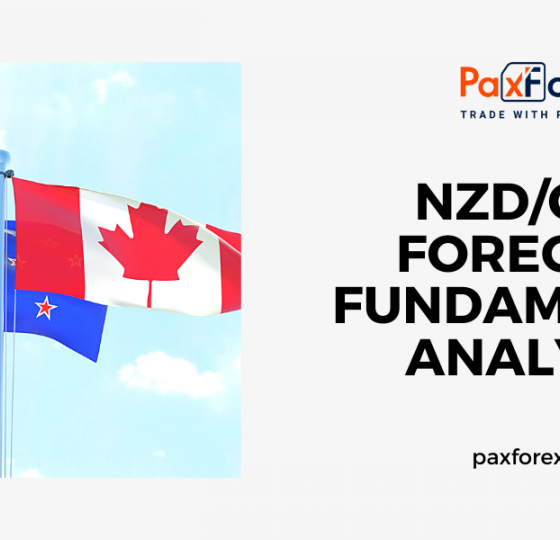Japanese economic data this morning came in mixed as retail sales disappointed with a bigger than expected contraction and vehicle production contracted in July. On the bright side, July industrial production rebounded as the jobless rate decreased and new construction orders surged. The Japanese Yen was able to advance slightly after the release of the data which kept the USDJPY hovering just below resistance levels. Will safe haven traders push the Japanese Yen higher heading into the weekend, filled with an uncertain speech by President Xi on the 70th Anniversary of the People’s Republic of China which could highlight the Chinese stance in the trade war with the US? Subscribe to the PaxForex Daily Fundamental Analysis where you can grow your balance trade-by-trade!
The US Dollar is likely to witness a rise in trading volume after the release of key personal income and spending data. Despite the slowing economy and the raging trade war, the US consumer borrowed money and supported the economy. How further can this trend extend? The Chicago PMI reading is also expected to have an impact on price action as it is expected to remain in contractionary territory. Forex traders will also get the final reading on US consumer confidence for August. How will this set of economic data impact the USDJPY? Today’s fundamental analysis will cover both sides of potential price action moves.
Here are the key factors to keep in mind today for US Dollar trades:
- US Personal Income and Personal Spending: US Personal Income for July is predicted to increase by 0.3% monthly and Personal Spending is predicted to increase by 0.5% monthly. Forex traders can compare this to Personal Income for June which increased by 0.4% monthly and to Personal Spending which increased by 0.3% monthly. Real Personal Spending for July is predicted to increase by 0.3% monthly. Forex traders can compare this to Real Personal Spending for June which were increased by 0.2% monthly. The PCE Deflator for July is predicted to increase by 0.2% monthly and by 1.4% annualized. Forex traders can compare this to the PCE Deflator for June which increased by 0.1% monthly and by 1.4% annualized. The PCE Core Deflator for July is predicted to increase by 0.2% monthly and by 1.6% annualized. Forex traders can compare this to the PCE Core Deflator for June which was increased by 0.2% monthly and by 1.6% annualized.
- US Chicago PMI: The US Chicago PMI for August is predicted at 47.9. Forex traders can compare this to the US Chicago PMI for July which was reported at 44.4.
- US Michigan Consumer Sentiment: Final US Michigan Consumer Sentiment for August is predicted at 92.1. Forex traders can compare this to previous US Michigan Consumer Confidence for August which was reported at 92.1. Final Current Conditions for August are predicted at 107.4 and Final Expectations are predicted at 82.3. Forex traders can compare this to previous Current Conditions for August which were reported at 107.4 and to Expectations which were reported at 82.3.
Here are the key factors to keep in mind today for Japanese Yen trades:
- Japanese Jobless Rate and Job-to-Applicant Ratio: The Japanese Jobless Rate for July was reported at 2.2% and the Job-to-Applicant Ratio at 1.59. Economists predicted a figure of 2.3% and of 1.61. Forex traders can compare this to the Japanese Jobless Rate for June which was reported at 2.3% and to the Job-to-Applicant Ratio which was reported at 1.61.
- Japanese Retail Trade Data: Japanese Retail Trade for July decreased by 2.3% monthly and by 2.0% annualized. Economists predicted a decrease of 0.9% monthly and of 0.7% annualized. Forex traders can compare this to Japanese Retail Trade for June which were reported flat at 0.0% monthly and which increased by 0.5% annualized. Large Retailer’s Sales for July decreased by 4.8% monthly. Economists predicted an decrease of 4.5% monthly. Forex traders can compare this to Large Retailer’s Sales for June which decreased by 0.5% monthly.
- Japanese Industrial Production: Preliminary Japanese Industrial Production for July increased by 1.3% monthly and by 0.7% annualized. Economists predicted an increase of 0.3% monthly and a decrease of 0.6% annualized. Forex traders can compare this to Japanese Industrial Production for June which decreased by 3.3% monthly and by 3.8% annualized.
- Japanese Vehicle Production: Japanese Vehicle Production for July decreased by 1.5% annualized. Forex traders can compare this to Japanese Vehicle Production for May which increased by 9.3% annualized.
- Japanese Housing Starts and Construction Orders: Japanese Housing Starts for July decreased by 4.1% annualized to 0.910M units. Economists predicted a decrease of 5.0% annualized to 0.899M units. Forex traders can compare this to Japanese Housing Starts for June which increased by 0.3% annualized to 0.922M units. Construction Orders for July increased by 26.9% annualized. Forex traders can compare this to Construction Orders for June which decreased by 4.2% annualized.
Should price action for the USDJPY remain inside the or breakdown below the 106.200 to 106.650 zone the following trade set-up is recommended:
- Timeframe: D1
- Recommendation: Short Position
- Entry Level: Short Position @ 106.400
- Take Profit Zone: 103.750 – 104.450
- Stop Loss Level: 107.100
Should price action for the USDJPY breakout above 106.650 the following trade set-up is recommended:
- Timeframe: D1
- Recommendation: Long Position
- Entry Level: Long Position @ 106.850
- Take Profit Zone: 107.800 – 108.250
- Stop Loss Level: 106.200
Open your PaxForex Trading Account now and add this currency pair to your forex portfolio. Did you know that trading forex with one of the prime MetaTrader4 brokers allows you to increase your profits with the same strategy? Find out now how you can excel at PaxForex!
We are one of the fastest growing Forex Brokers in the Market. Trade with PaxForex to get the full Forex Trading experience which is based on...
- The Reliability on all Assets in the Market
- Trusted Worldwide for over a Decade
- Live Multi-Lingual Online Support 24/5













